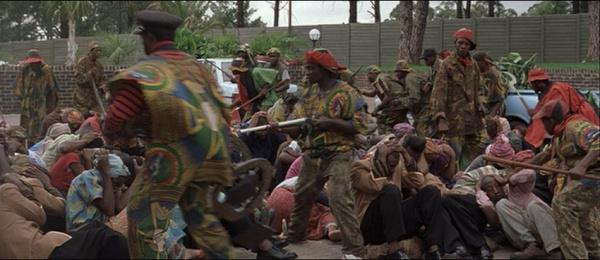There is hardly anything more cruel and meaningless than genocide. The most amazing thing is that this phenomenon did not arise in the gloomy and fanatical Middle Ages, but in the progressive 20th century. One of the most monstrous massacres was the genocide in Rwanda in 1994. According to various sources, then in this country from 100 thousand to 1 million people were killed in 100 days. The question immediately arises: "In the name of what?"
Reasons and participants
The genocide in Rwanda is the result of a centuries-old conflict between two socio-ethnic groups in the region, the Hutus and the Tutsis. Hutu made up about 85% of Rwanda's inhabitants, and Tutsi - 14%. The last ethnic group, being in the minority, has long been considered the ruling elite. During 1990-1993 a civil war was burning in the territory of this African country . In April 1994, as a result of a military coup, an interim government consisting of representatives of the Hutu people came to power. With the help of the army and the militia units “impuzamugambi” and “interahamwe,” the government began the destruction of the Tutsi, as well as the moderate Hutus. From the Tutsi side, the Rwandan patriotic front took part in the conflict, aimed at the destruction of the Hutus. On July 18, 1994, a relative peace was restored in the country. But 2 million Hutus emigrated from Rwanda, fearing reprisal. Thus, it is not surprising that the word “genocide” immediately appears in the mind of Rwanda.

Rwandan Genocide: Terrifying Facts
State radio, which was controlled by the Hutus, propagated hatred of Tutsi. It was through him that the actions of the rioters were often coordinated, for example, information was transmitted about the shelters of potential victims.
Nothing breaks the way of life like genocide. Rwanda is clear evidence of this claim. So, at that time about 20 thousand children were conceived, most of which were the fruits of violence. Modern Rwandan single mothers are persecuted by society with its traditional perception of rape victims, and they are often sick with HIV.
11 days after the start of the genocide, 15 thousand Tutsis were gathered at the Gatvaro stadium. This was done only in order to simultaneously kill more people. The organizers of this massacre fired tear gas into the crowd , and then started shooting at people and throwing grenades at them. Although this seems impossible, a girl named Albertina survived in this horror. Seriously wounded, she took refuge under a pile of those killed, among whom were her parents, brothers and sisters. Only the next day, Albertina was able to get to the hospital, where Tutsi sweeps also took place.
The genocide in Rwanda has forgotten its vows and representatives of the Catholic clergy. So, more recently, the case of the Catholic clergyman Atanaz Seromb was considered in the framework of the UN International Tribunal. He was accused of participating in a conspiracy that resulted in the extermination of 2 thousand Tutsi refugees. According to witnesses, this priest gathered the refugees in the church, where they were attacked by the Hutus. Then he ordered the destruction of the church with a bulldozer.